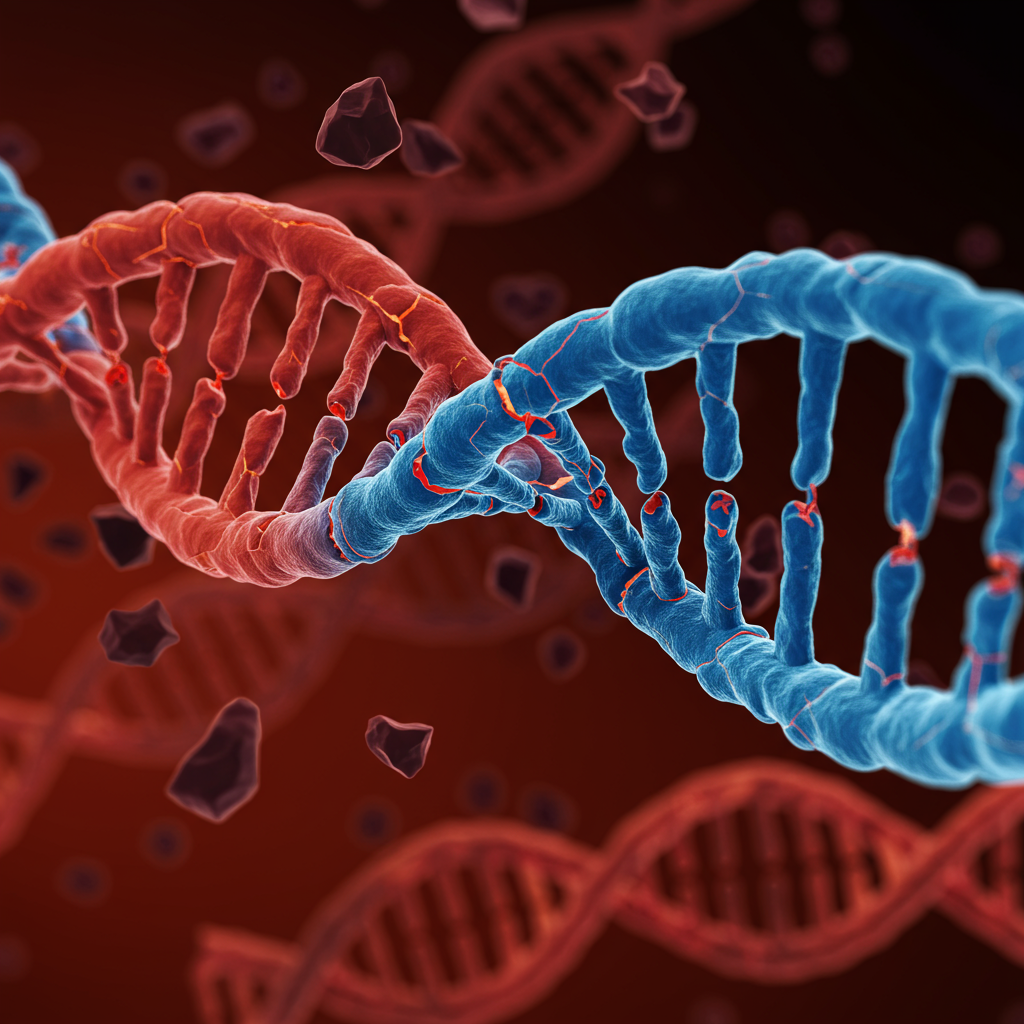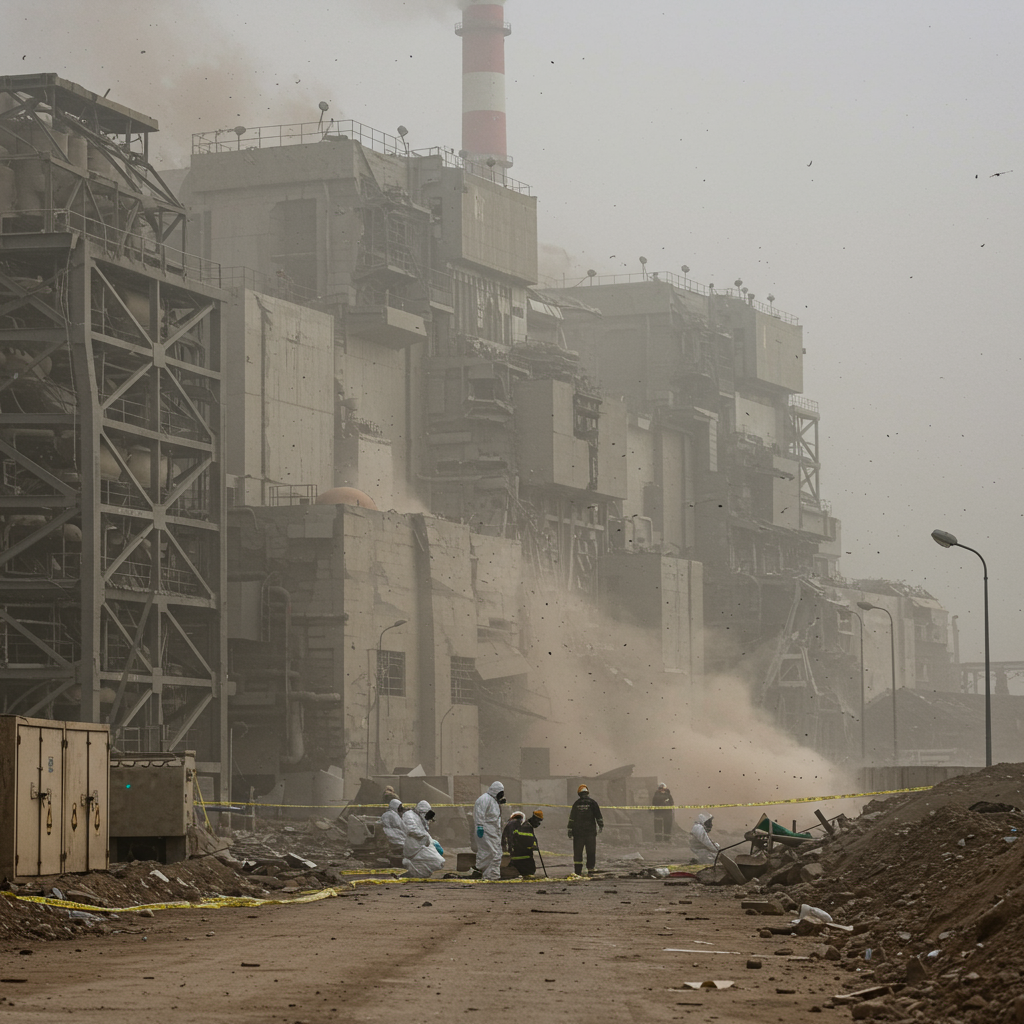Lung cancer is often strongly linked to smoking, but a significant portion of cases occur in people who have never smoked. Understanding why this happens is crucial for prevention and treatment. These cases of lung cancer in never smokers (LCINS) represent about 25% of all lung cancers diagnosed globally. While previous studies pointed to environmental factors like secondhand smoke and air pollution, researchers needed a clearer picture at the genetic level. A groundbreaking international study, known as Sherlock-Lung, has now delved deep into the genomes of never-smoker lung tumors to uncover the “mutagenic forces” at play.
This extensive research, published in the journal Nature (2025) and involving 871 treatment-naive never smokers from 28 diverse geographic locations, analyzed the complete genetic makeup of their lung cancers. The goal was to identify specific DNA mutations and patterns (called mutational signatures) that act as fingerprints of past exposures, offering direct genomic evidence for the causes of LCINS.
Cracking the Genetic Code: The Sherlock-Lung Study
The Sherlock-Lung study represents the largest whole-genome analysis to date focused exclusively on lung cancer in never smokers. By sequencing the entire genome of tumors from these patients, researchers could catalog the precise changes in their DNA. They then correlated these genetic blueprints with potential environmental exposures based on the patients’ reported histories and geographic locations. This genomic approach aimed to move beyond statistical associations seen in epidemiological studies and identify direct biological links.
Global Genomic Landscapes: Regional Differences
One striking finding was the variation in common cancer-driving mutations based on where patients lived. Within adenocarcinomas, the most frequent type of LCINS:
KRAS mutations were found nearly four times (3.8x) more often in never smokers from North America and Europe.
EGFR and TP53 mutations were more prevalent in never smokers from East Asia.
This geographic difference highlights that the underlying causes or genetic predispositions for LCINS can vary significantly across populations. These specific “driver” mutations are critical because they fuel cancer growth and can influence treatment responses.
Unmasking the Culprits: Key Mutational Signatures
Beyond specific gene mutations, the study identified distinct “mutational signatures” – characteristic patterns of DNA damage left by different mutagenic processes. These signatures are like forensic evidence in the genome, pointing to the likely cause of the mutations.
The Mysterious SBS40a and the Aristolochic Acid Link
Several prominent signatures were found:
SBS40a: This signature was the most common single base substitution signature in adenocarcinomas. Its specific cause remains unknown. Intriguingly, it was particularly frequent in tumors with EGFR mutations.
SBS22a: This signature has been previously linked to exposure to aristolochic acid. This acid is found in certain traditional Chinese herbal medicines. The study found SBS22a almost exclusively in patients from Taiwan, providing strong genomic evidence that aristolochic acid may be a cause of lung cancer mutations in some never smokers in this region, potentially through inhalation or other exposure routes not previously emphasized.
Identifying these signatures helps researchers understand the specific types of DNA damage leading to LCINS.
Environmental Factors: Air Pollution vs. Secondhand Smoke
Two environmental exposures frequently discussed in relation to LCINS are secondhand smoke and air pollution. The Sherlock-Lung study provided critical genomic insights into their potential roles.
Air Pollution’s Powerful Mutagenic Impact
The study found a strong and clear association between estimated levels of fine particulate matter (PM2.5) air pollution in patients’ living areas and the genomic changes in their tumors.
Patients from regions with high air pollution levels (>20 μg/m³) showed:
An overall increase in most types of mutations (single base, double base, insertions/deletions).
Higher likelihood of having TP53 mutations, a key tumor suppressor gene often altered in cancer.
Significantly shorter telomeres. Telomeres are protective caps on chromosomes; their shortening is linked to cellular aging and genomic instability, potentially promoting faster cancer development.
Crucially, the study found specific mutational signatures elevated in high-pollution areas:
A 3.9-fold increase in signature SBS4, a pattern previously strongly associated with tobacco smoking. This suggests air pollution can induce a similar type of DNA damage seen in smokers.
A 76% increase in signature SBS5, a “clock-like” signature linked to aging and cellular processes.
A clear dose-response was observed: higher estimated PM2.5 levels correlated directly with a greater number of somatic mutations and shorter telomeres. This genomic evidence strongly supports air pollution as a significant factor driving mutations in never smoker lung cancer. It appears to act both as an initiator (causing specific DNA damage like SBS4) and potentially as a promoter (accelerating cellular aging via SBS5 and telomere shortening), creating a fertile ground for cancer growth.
Re-evaluating Secondhand Smoke’s Genomic Fingerprint
While observational studies link secondhand smoke to increased lung cancer risk, the Sherlock-Lung study’s genomic analysis yielded a different perspective on mutation patterns.
The study found:
Only a modest increase in overall mutations (about 8.3% higher) in never smokers exposed to secondhand smoke.
Slightly shorter telomeres (about 5.4% shorter) in exposed individuals.
No significant association between reported secondhand smoke exposure and specific mutational signatures or individual driver mutations in this cohort.
This genomic finding suggests that, in the context of causing specific detectable DNA mutation signatures like those linked to smoking (SBS4), secondhand smoke’s effect may be too weak to be consistently identified by current methods, or its contribution to cancer involves non-mutagenic mechanisms not captured by this type of analysis. The authors caution that this does not mean secondhand smoke is harmless, only that its mutagenic footprint might be less pronounced than that of high air pollution or direct smoking. Accurately assessing secondhand smoke exposure also remains challenging.
Diverse Disease: Genomic Differences by Tumor Type
The study also highlighted genomic differences based on the specific type of lung cancer in never smokers:
Adenocarcinomas: The most common type, showing high genomic heterogeneity with various signatures including SBS40a, some SBS4, and signatures linked to DNA repair defects.
Carcinoid Tumors: Exhibited lower mutation burdens, longer telomeres, and a different dominant signature (SBS5) along with signatures potentially linked to hormone influence (SBS8). They lacked common adenocarcinoma drivers like EGFR and KRAS.
- Squamous Cell Carcinomas: Had generally higher mutation burdens than adenocarcinomas, with specific signatures like SBS3 and SBS4 more prevalent. TP53 was a very common driver mutation in this type.
- Air pollution is a proven mutagenic cause of LCINS: It’s not just a statistical risk factor; it directly damages DNA in ways that promote cancer, mimicking some effects of smoking. This reinforces the need for global efforts to reduce air pollution.
- Specific environmental toxins matter: The link between aristolochic acid and a distinct mutational signature highlights the importance of identifying and avoiding specific carcinogens, especially in regional contexts where traditional practices might pose unintended risks.
- LCINS is genomically diverse: Different exposures (like air pollution, aristolochic acid) leave distinct marks. Geographical factors also influence common driver mutations.
- New research avenues: The identification of signatures like SBS40a (of unknown cause) necessitates further investigation into other potential environmental or endogenous factors contributing to LCINS.
- www.nature.com
- www.newsweek.com
- www.newswise.com
- www.medrxiv.org
- www.nature.com
Understanding these differences can inform tailored approaches to diagnosis and treatment for different LCINS subtypes.
What This Means: Insights for Prevention and Treatment
The findings from the Sherlock-Lung study offer crucial insights:
This deeper genomic understanding of lung cancer in never smokers is vital. By identifying the specific causes and genetic changes, researchers can work towards better screening methods, more accurate risk assessment, targeted prevention strategies, and potentially new therapies aimed at the specific mutations and pathways activated in these tumors.
Frequently Asked Questions
What are the main causes of lung cancer in never smokers identified by this study?
The Sherlock-Lung study identified several factors contributing to lung cancer in never smokers. Air pollution, specifically fine particulate matter (PM2.5), was strongly linked to increased DNA mutations and specific mutational signatures like SBS4 and SBS5. Exposure to aristolochic acid, found in some traditional medicines, was tied to the SBS22a signature, particularly in patients from Taiwan. While geographical factors influenced common driver mutations (KRAS vs. EGFR/TP53), the study provided direct genomic evidence linking environmental exposures, especially air pollution, to the genetic damage seen in these cancers.
Where were different genetic mutations more common in never smokers based on the study?
The study found significant geographical variations in the prevalence of key driver mutations in adenocarcinomas from never smokers. KRAS mutations were found to be much more common (nearly four times more frequent) in patients from North America and Europe. In contrast, EGFR and TP53 mutations were observed more frequently in patients from East Asia. This highlights regional differences in the genetic landscape of lung cancer in never smokers, suggesting potential influences from varying genetic backgrounds, environmental exposures, or lifestyle factors across these regions.
How does air pollution cause genetic changes similar to smoking in never smokers?
The study showed that high levels of PM2.5 air pollution are associated with an increase in DNA mutations in never smokers’ lung tumors. Critically, it was linked to mutational signature SBS4, which was previously considered a fingerprint of tobacco smoking. This suggests air pollution directly damages DNA in a similar way to smoking-related chemicals. Air pollution was also linked to the clock-like SBS5 signature, increased overall mutation burden, and shorter telomeres, indicating it may also accelerate cellular aging and instability, promoting the growth of genetically damaged cells into tumors.
Conclusion: Charting a New Course Against LCINS
The puzzle of why people who never smoked develop lung cancer is becoming clearer thanks to large-scale genomic studies like Sherlock-Lung. By revealing the specific mutational fingerprints left by air pollution, certain toxins like aristolochic acid, and potentially other unknown factors, this research provides invaluable genomic evidence. It underscores that environmental factors play a critical role in shaping the genetic landscape of LCINS, sometimes inducing the very same types of DNA damage previously thought to be unique to smoking. These findings are essential steps toward developing more targeted prevention strategies, improving risk assessment, and finding new treatment avenues for this significant and complex disease in the global population.



